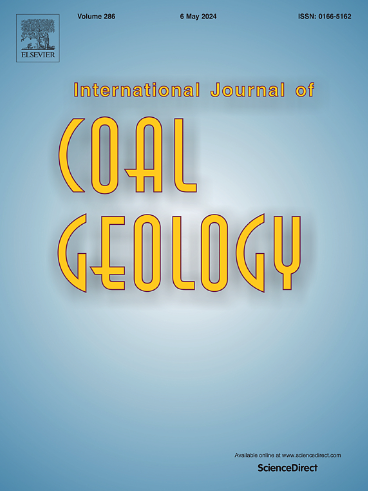三井联合反演镜质组反射率、荧光红绿商、磷灰石裂变径迹与温度的关系
IF 5.7
2区 工程技术
Q2 ENERGY & FUELS
引用次数: 0
摘要
沉积盆地的热成熟度评估通常依赖于不同质量和灵敏度的热指标,这些指标通常在井间分布不均匀。为了提高解释可靠性并减少局部统计变异性的影响,我们对位于不同地质背景下的三口井的热成熟度数据采用了联合反演方法。其中一口井Aars-1位于北海东部的丹麦盆地,该井受到高质量数据的限制,包括当前温度、镜质体反射率(VRo)、红绿荧光商(R/G)和磷灰石裂变径迹(AFT)年龄。另外两口井位于黑海盆地西北部,包含VRo和R/G数据,但缺乏温度和AFT记录。本文章由计算机程序翻译,如有差异,请以英文原文为准。
Relationship between vitrinite reflectance, fluoresence red/green quotients, apatite fission tracks and temperature by joint inversion of three wells
Thermal maturity assessment in sedimentary basins often relies on thermal indicators of varying quality and sensitivity, frequently available in an uneven distribution across wells. To improve interpretative reliability and reduce the influence of local statistical variability, we apply a joint inversion approach to thermal maturity data from three wells situated in contrasting geological settings. One well, Aars-1, located in the Danish Basin of the eastern North Sea, is constrained by high-quality data including present-day temperature, vitrinite reflectance (VRo), red-to-green (R/G) fluorescence quotients, and apatite fission track (AFT) ages. The other two wells, from the northwestern Black Sea Basin, contain VRo and R/G data but lack temperature and AFT records.
All wells contribute to constraining a kinetic model for the R/G quotient and the thermal evolutiuon of the Black Sea wells. The resulting models yield predicted present-day bottom hole temperatures of approximately 100 °C at 4000 m depth, consistent with values from independent studies in the region. The thermal immaturity of the Black Sea wells is attributed to low background heat flow and high sedimentation rates. In the immature to early mature maturity window, a linear relationship is established between VRo and R/G, described by the equation: VRo = 1.3239 × R/G – 0.2352, valid within the calibration range of 0.43 < R/G < 0.73 and 0.33 < VRo < 0.73. Based on this relationship, the previously reported VRo discontinuities at the base of the Black Sea wells are likely artefactual.
This study demonstrates the value of combining independent thermal indicators across multiple wells and depositional settings. The approach enhances the robustness of thermal history reconstructions and offers a practical framework for evaluating relative heat flow and maturity in basins with incomplete or uneven datasets. Particularly, the R/G quotient, derived from autochthonous alginite deposited within the basin, is less affected by transport-related degradation than VRo and may offer a more representative measure of in-place thermal maturity, particularly in high-sedimentation environments.
求助全文
通过发布文献求助,成功后即可免费获取论文全文。
去求助
来源期刊

International Journal of Coal Geology
工程技术-地球科学综合
CiteScore
11.00
自引率
14.30%
发文量
145
审稿时长
38 days
期刊介绍:
The International Journal of Coal Geology deals with fundamental and applied aspects of the geology and petrology of coal, oil/gas source rocks and shale gas resources. The journal aims to advance the exploration, exploitation and utilization of these resources, and to stimulate environmental awareness as well as advancement of engineering for effective resource management.
 求助内容:
求助内容: 应助结果提醒方式:
应助结果提醒方式:


